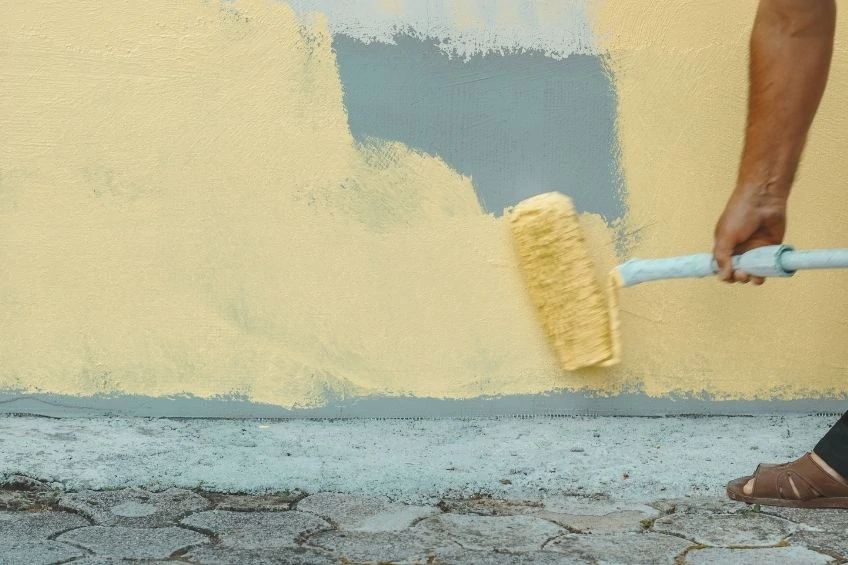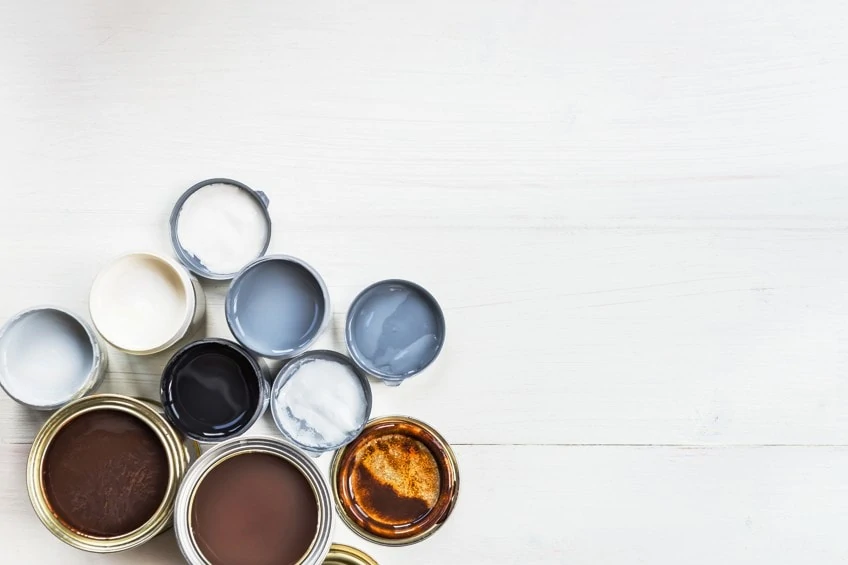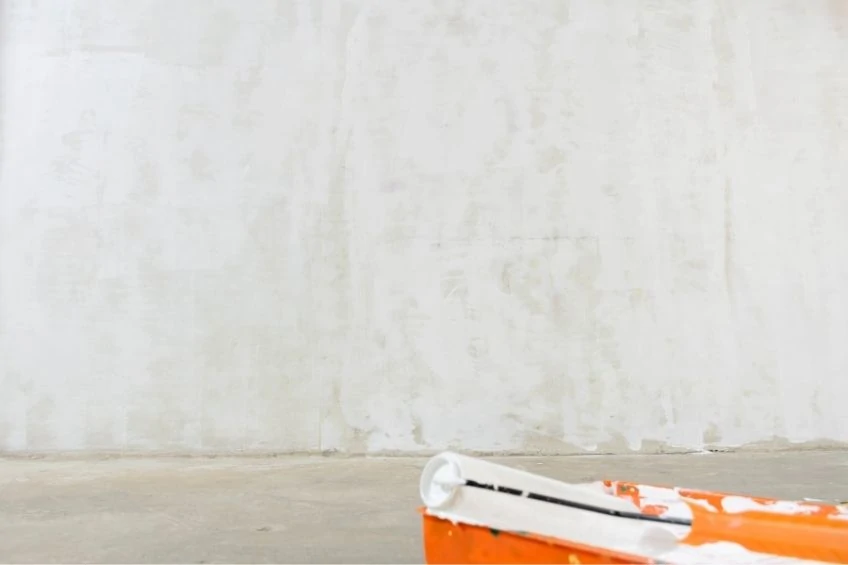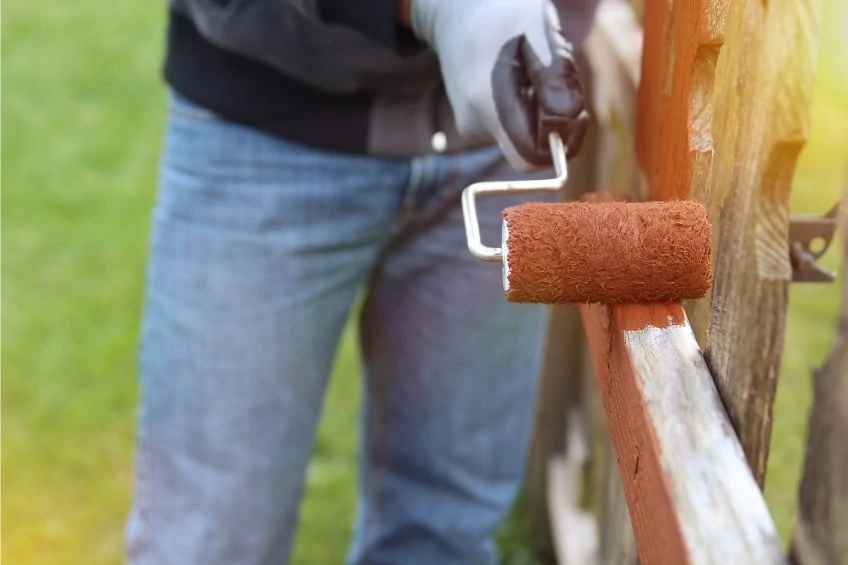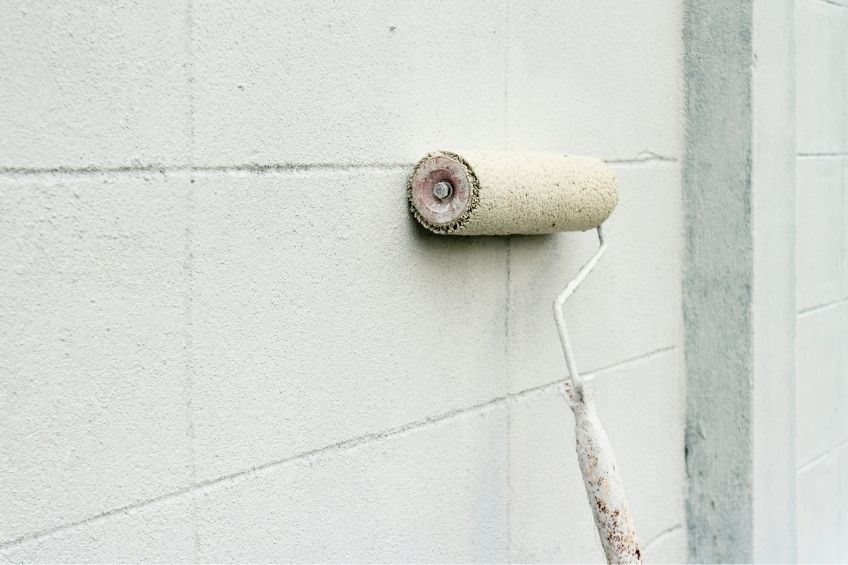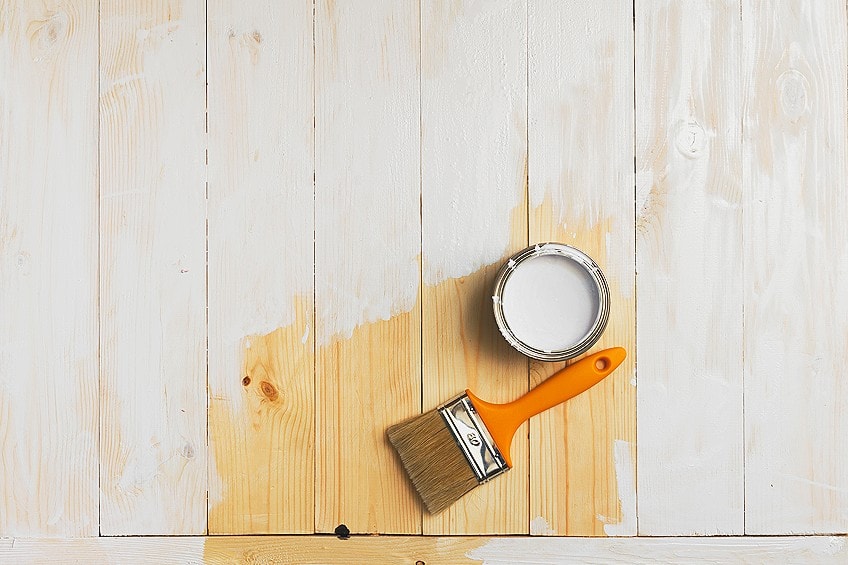Best Exterior Primer – How to Find the Best Outdoor Paint Primer
This post may contain affiliate links. We may earn a small commission from purchases made through them, at no additional cost to you. You help to support resin-expert.com
The thought of getting a fresh new coat of exterior paint in your home can be exciting. The look of freshly renewed wood surfaces can be quite mesmerizing, and there is no better way to renew a surface than with a fresh coat of paint. For effective exterior painting, you will need the best exterior primer. However, there are a few factors to consider before you head out shopping for the exterior primer. This article will highlight some of the important things to consider before choosing the best exterior primer for your needs.
Table of Contents
Understanding Exterior Primer Paint
Primer is something important that you cannot afford to overlook because it is the foundation of your exterior paint job. It is designed to provide a seal on any type of material you will be painting. The type of finish that you will get after applying a primer is quite supreme as compared to one that has not been coated. Most outdoor primers are manufactured with stain blockers, UV inhibitors, and so on.
Consider a few aspects before deciding on an outdoor paint primer. These aspects include the surface you will be working on, the condition of that surface, the paint you will use, and the environment outside. This is because some surfaces do not require an exterior primer. However, primer is one of the most useful products that you should have if you want to get the best results when you are repainting.
When to Use Exterior Primer
You should understand the uses of an exterior primer before you go and buy it. The following is a list of some of the factors that require you to use the best exterior primer:
- Exterior primer should be used in the process of transitioning from oil-based paints to latex paints or if you will be changing from a darker to a lighter color. Using the best exterior oil-based primer is best for this.
- It should be used on surfaces that still require another coat of paint.
- Should be used on glossy old paint.
- Should be used on surfaces that have been poorly prepared, or surfaces that have been repaired recently, or a surface that has been sanded or scraped quite heavily.
- You can also use the exterior primer on chalky surfaces that have weathered.
Best Exterior Primer Paint Reviews
Finding the best exterior primer can be challenging if you are not sure about what primers to use on certain surfaces. To make this easier, we have selected the best exterior primer paint reviews below to help you find the ideal product for your needs.
Best Overall: KILZ Premium High-Hide Interior/Exterior Primer/Sealer
This Kilz primer is used for many purposes and is suitable for a wide variety of outdoor surfaces. The Kilz Premium High-Hide Interior/Exterior Primer/Sealer produces durable surfaces that are perfect for professional painters and DIY project warriors. It contains no volatile organic compounds (VOCs) and it dries very fast. You must be cautious when handling this substance. This brand has been in business for over four decades, thus the brand has refined its products to suit versatile needs.
- A powerful stain-blocking water-based primer
- It also works as an effective sealer over various surfaces
- Provides excellent adhesion qualities to various materials
Pros
- Mildew-resistant
- Both primer and sealer
- Excellent adhesion and durability
- For indoor and outdoor use
- Suitable for latex and oil-based paints
- Contains no VOCs
- Quite easy to handle
Cons
- Can cause brush marks
- Dries very fast, you must work fast
Budget-Friendly: RUST-OLEUM Zinsser Bulls Eye Primer
This product is famous because of its reasonable price and high quality. This primer is interior and exterior friendly, and is suitable for many different surfaces. It is suitable for surfaces like metal, wood, plastic, and so on. It also comes in an aerosol spray that you can use for the hard-to-reach areas. Of course, the primer dries to a superior, highly-adhesive and durable finish.
- A water-based formula that sticks to most surfaces
- Resists mildew growth, blistering, and peeling
- Contains a rust inhibitor, which is great for metal surfaces
Pros
- Long-lasting and great value
- Safe to use because it is water-based
- Suitable for any topcoat
- Resistant to mildew and molds
- You should prepare it before use
- Suitable for a variety of surfaces
- Perfect for indoors and outdoors
Cons
- Requires multiple coats to cover dark areas
Best Metal Primer: RUST-OLEUM Clean Metal Brush-On Primer
This is one of the best primers available. The formula is resistant to corrosion and weather. It easily bonds with interior and exterior surfaces. You can use it on materials like masonry, wood, and so on. It is one of the best products when it comes to durability. Top-rated for being suitable for various different surfaces compared to other substances. It dries quickly, creating a beautiful smooth finish. The finish is suitable for any topcoat.
- A weather and corrosion-resistant exterior/interior primer
- Oil-based formula for an extra durable coating
- Provides a flat white finish for any topcoat
Pros
- Adhesive primer suitable for metal
- It blocks rust
- White finish can be covered with any topcoat
- Suitable for indoor and outdoor
- It is resistant to corrosion and weather
Cons
- Not suitable for galvanized metal
Exterior Primer Paint Considerations
You must first understand the reason why you are buying the primert. Consider a few factors first before you head out or go online to do your shopping. Some of the factors to consider are listed below:
Surfaces
Analyze and understand your surface properties before you buy the best exterior primer for your project. This is because not all primers will adhere to the same surfaces. Some of the information about certain products and surfaces can be found on the back of the specific product. The following are some of the different types of surfaces that you might have to consider:
Bare Wood
If you want the best primer for wood, then it must be either oil-based or latex. The primer can only effectively work if the wood was never painted or stained before. This will enable the primer to seal the surface, adding more durability to the wood. However, be cautious when using oil-based primers because they emit VOCs.
Painted Wood
The best exterior oil-based primer should be used for painted wood since it will not cause the wood to be chalky. Chalking is a process whereby the painted wood surface corrodes and emits a chalky powder. The best exterior oil-based primer will produce a smoother finish that has a dense foundation that prevents imperfections. Go through the list of exterior primers reviews before you decide on the product to buy.
Stain-Prone Surfaces
You can also opt for a stain-blocking primer for stained wood. Stain-blocking primer works well on tannin-contaminated bare wood, cabinets with grease stains, and so on. When the stains have been covered with the primer, it will prevent bleeding and discoloration that may extend to the topcoat. Use a latex stain-blocking primer if you are dealing with water-based stains.
Glossy Surfaces
If you are working on a glossy surface, it is advisable to go for a bonding primer because it is specifically manufactured for glossy surfaces. It is also suitable for plastic and glass.
Metal
Metals are prone to rust, so a rust-resistant oil-based primer is suitable for metals. Never use latex primers when working on a metal surface, as this might end up promoting rust. It is difficult to coat metal because of the rust, even the smoothness of the finish can be a hindrance too. So, ensure you use a primer that is suitable for metals.
Drying Time
Check the drying time that is required for the process of recoating. The drying time will determine the amount of time you would need to wait before applying another coat of primer or paint. Latex primers dry within an hour. On the other hand, oil-based primers take at least three hours to dry.
Paint-and-Primer In-One vs. Dedicated Primer
The combo of paint and primer will enable you to paint and prime at the same time. However, you can only use these products in the following situations:
- If you are painting on a surface that is not prone to peeling.
- If you are not painting on stained or bare wood.
- If you are repainting a surface that was painted before with the same color or if you are going to be using a darker shade.
A separate primer and paint are necessary in the following circumstances:
- If you are painting on bare wood or stained wood.
- If you a painting a lighter shade from the previous one.
- If you want the latex coat on the long-lasting oil-based layer. This will require a proper layer of primer to enhance the adhesion properties of the latex paint.
Tint Ability
Most primers come in standard shades of white or gray. It is possible to use either of the shades without tinting. The other option is to tint the primer with a lighter shade before using it. You must buy a primer that is labeled “tintable” as this will provide an even and rich final color and finish.
Low Odor
Go for a primer that contains no VOCs as this will emit a low odor. This is because VOCs are dangerous, and they are quite harmful to health and should not be used indoors. It is advisable to use odorless materials all the time as these are less harmful to health and the environment. Materials with low VOCs material can be used in those places that are not well-ventilated.
Non-Toxic Formula
Toxic formulas are best recommended to be used outdoors because they can be harmful to your skin and you might end up with serious injuries. Water-based primers are recommended as the safest products to use. Practice safety precautions even when you are handling non-toxic products. Wear a mask and gloves when dealing with primers.
Scratch Resistance
This feature is not found in all primers although it is important. Scratch-resistant protects your surfaces from harmful elements and any other harder materials. The best exterior primer should have a scratch-resistant feature to protect your surface for a longer time.
How to Choose the Right Primer
Even if you find the right primer from the market, the process will not be entirely complete until you learn how to use the primer. You should also keep in mind that not all problems have the same solution and should never be treated the same.
Scenario 1: Odors and Interior Stains
You should be aware of some of the stains that can be problematic and ending up bleeding through paints and primers regardless of the number of coats applied. This also goes for strong odors from cigarette and fire smoke. To solve this problem you must use a stain-blocking primer. Stain-blocking primer is available in latex-based and oil-based versions.
Scenario 2 New Drywall
Be cautious of the mud that is placed on the seams of the drywall as this can absorb paint differently as compared to the rest of the surface. This will result in a lot of blemished areas below the paint. This is defined as flashing, and the result will be an uneven gloss. A drywall primer or sealer is necessary to get rid of this problem.
Tip: Before painting, wait 48 hours for the primer to dry . Some of the primers can bond effectively with the paints that are applied on top of them. When you are done with the priming, wait a few days before painting.
Scenario 3: Areas That Are Prone to Moisture
High moisture areas like closets, bathrooms, kitchens are areas of high moisture. These areas are quite problematic because of mildew, peeling, and so on. To reduce moisture that enters through the walls, it is advisable to use a vapor barrier primer. To effectively manage mildew and peeling from the interior walls, a stain-blocking primer will be a perfect choice. The stain-blocking primer will prevent any blistering on the exterior walls.
Tip: You can get rid of mildew by doing a mixture of three parts water and one part bleach. This should be done before you begin the process of priming.
Scenario 4: Walls That Have Been Repaired
You may notice wall patches when you are done with your painting process because they tend to absorb paint differently from the rest of the surface. You can use a drywall primer that is of high quality as a means of covering the surface to prevent flashing. Use an oil-based stain-blocking primer if you had used plaster. This will enable you to achieve excellent results.
Scenario 5: New Bare Wood
Wood is absorbent and can draw moisture, thus a wood primer is a perfect choice when it comes to sealing the surface. This sealer will hide the wood imperfections thus making the surface look better. The surface will become more uniform.
Tip: Slow-drying oil-based primers are recommended because of their strong adhesion properties and they are quite easy to sand as compared to water-based primers.
Scenario 6: Medium-Density Fiberboard
If you are using a medium-density fiberboard (MDF) that is not pre-primed, then you should use an oil-based primer. You should clean all surfaces before you begin priming. Make sure that there is no dirt or dust, and the surface must be smooth.
Tip: A water-based paint can only soak into the surface and cause swelling.
Scenario 7: Woodwork That has Been Painted.
Always review the type of paint you have before you go to buy a primer. If the paint is still in good condition, then you do not have to buy a primer. Chipped or chalking surfaces need oil-based enamels to properly recover and retain their original look. Once you have completed your priming process, a light sanding might help to achieve a smooth finish.
Tip: The enamel undercoat can bond quite well with surfaces that have been painted before. This has a perfect effect on the topcoat quality. Shellac and water-based primers are not recommended because they become brittle when they are drying.
Scenario 8: Intense Color Changes
Changing shades of paint from light to dark requires a lot of coats to effectively cover the dark marks from the previous surface. It will save you a lot of time and money to tint the primer first. This is because the number of coats that need to cover the darker marks will be reduced.
Tip: Make sure the primer you are using requires a tint or not. This is because not all primers require tinting.
Scenario 9: Exterior Wood
The best exterior wood primer is always necessary for wood that tends to be exposed to harsh elements. The best exterior wood primer would be an acrylic-based primer.
Tip: Primers and paints from the same brand work best together.
Scenario 10: Old Exterior Paint
Latex or acrylic paint primer effectively works on bare wood that has been peeled from paint. If the paint is chalking, then it is a different story. You must redo the whole surface once again.
Tip: You can identify chalking by using a clean rag to wipe the surface. If the clean rag picks up dust, then it means the surface is chalking, so you will need to redo it.
You can also practice pressure washing to remove any loose paint so that the paint can adhere effectively to the surface. The pressure washer nozzle must be at least 16 inches away from the surface when working. Areas that are peeling must be thoroughly cleaned, sanded, and scraped before you commence any work. Failure to clean the surface will produce a poor finish that must be redone again in two years.
Scenario 11: Exterior Stainable Wood
Certain types of wood contain tannins, this pigment is mostly found in cedar and redwood and it causes the wood to bleed through the paint and primer. The only solution to prevent this is to use an oil-based primer topped up with a stain-blocking paint. You can also find these properties in most of the best exterior wood primers if you check properly.
Tip: If you are planning on using an oil topcoat, then you must use an oil-based primer.
Frequently Asked Questions
Do Primers Last Long?
Primers do not have a long shelf life, once you open them then they will start to harden. If you are unsure of the amount you want to use, do not buy them in bulk. Rather buy the exact quantity you want to use.
Is an Exterior Primer Important?
Yes, the exterior primer provides a smooth finish for rough surfaces. This will enhance durability for your surface, saving you time and money from repainting the surface regularly.
What Are the Different Types of Primers?
There are shellac-based, water-based, and oil-based primers. They vary in use and should be considered carefully.
Do Primer Sheens Come in Different Types?
Yes, they do. They usually come in a matte, gloss, and satin finish. Each one of these finishes has its purpose. You can use gloss for your front doors, take satin into your kitchen and bathrooms. Matte is suitable for most surfaces.
The best exterior primer is necessary for outdoor surfaces because it enhances the durability and adhesion properties of the wood. Make sure you use the correct product on your outdoor surfaces so that you can get long-lasting results. We hope you have a successful time priming!


